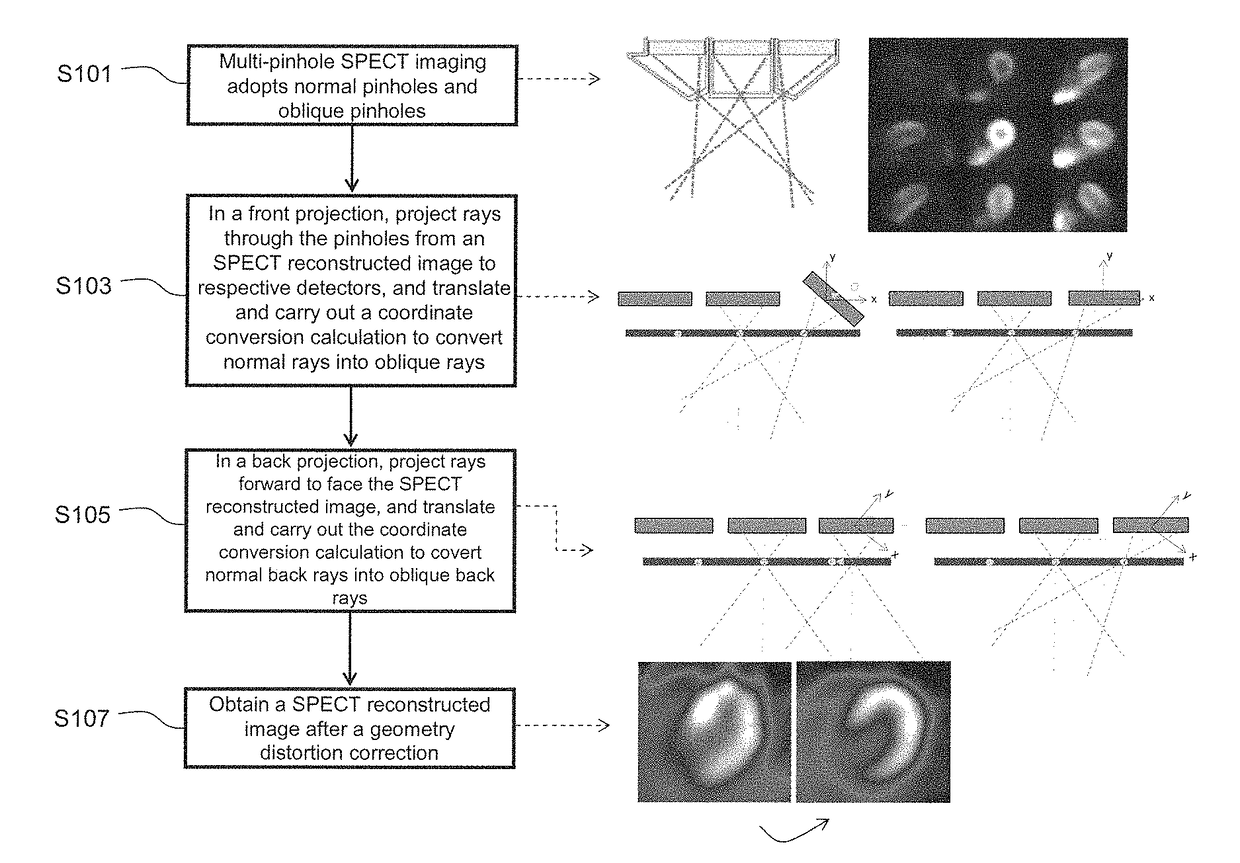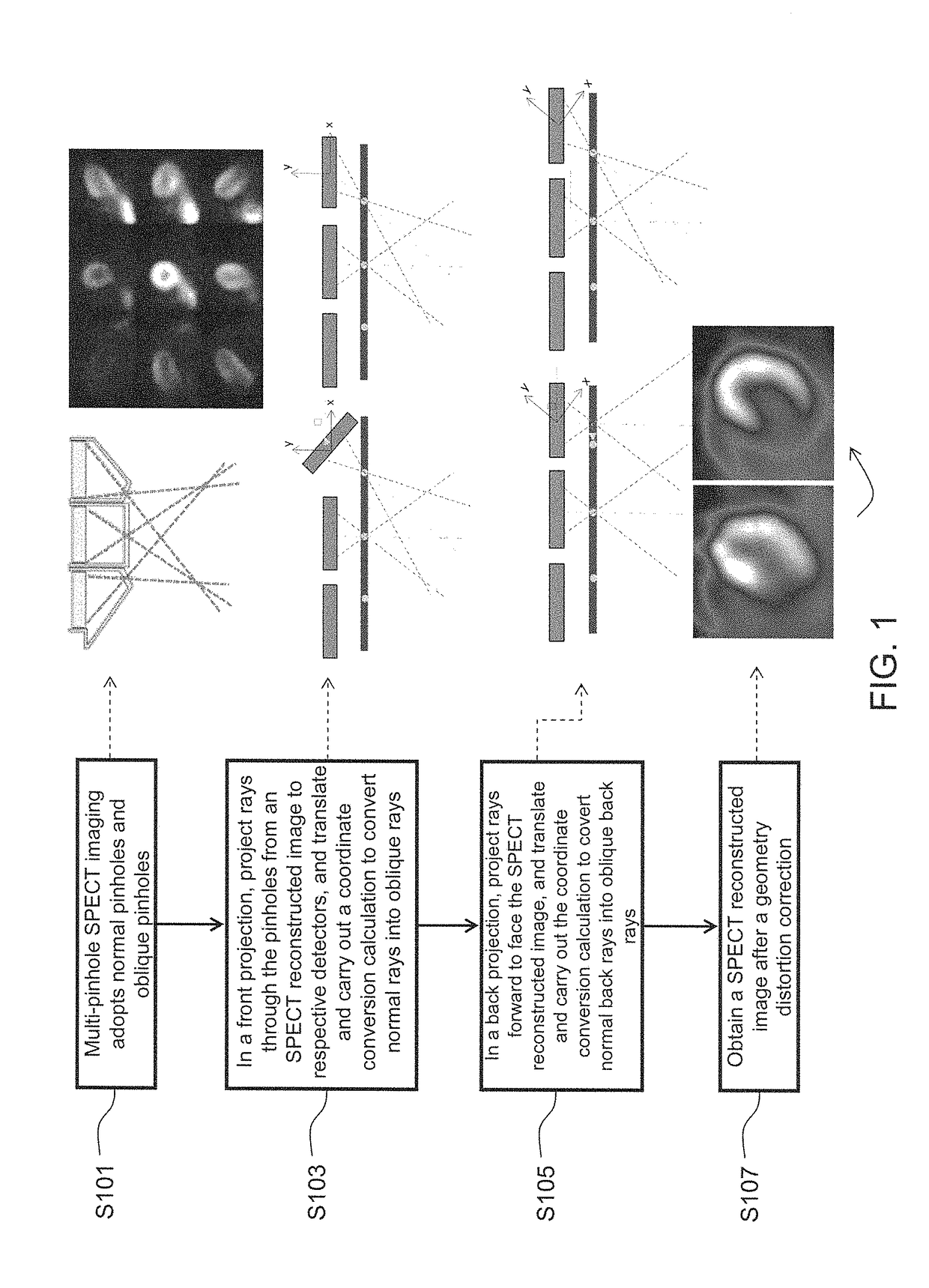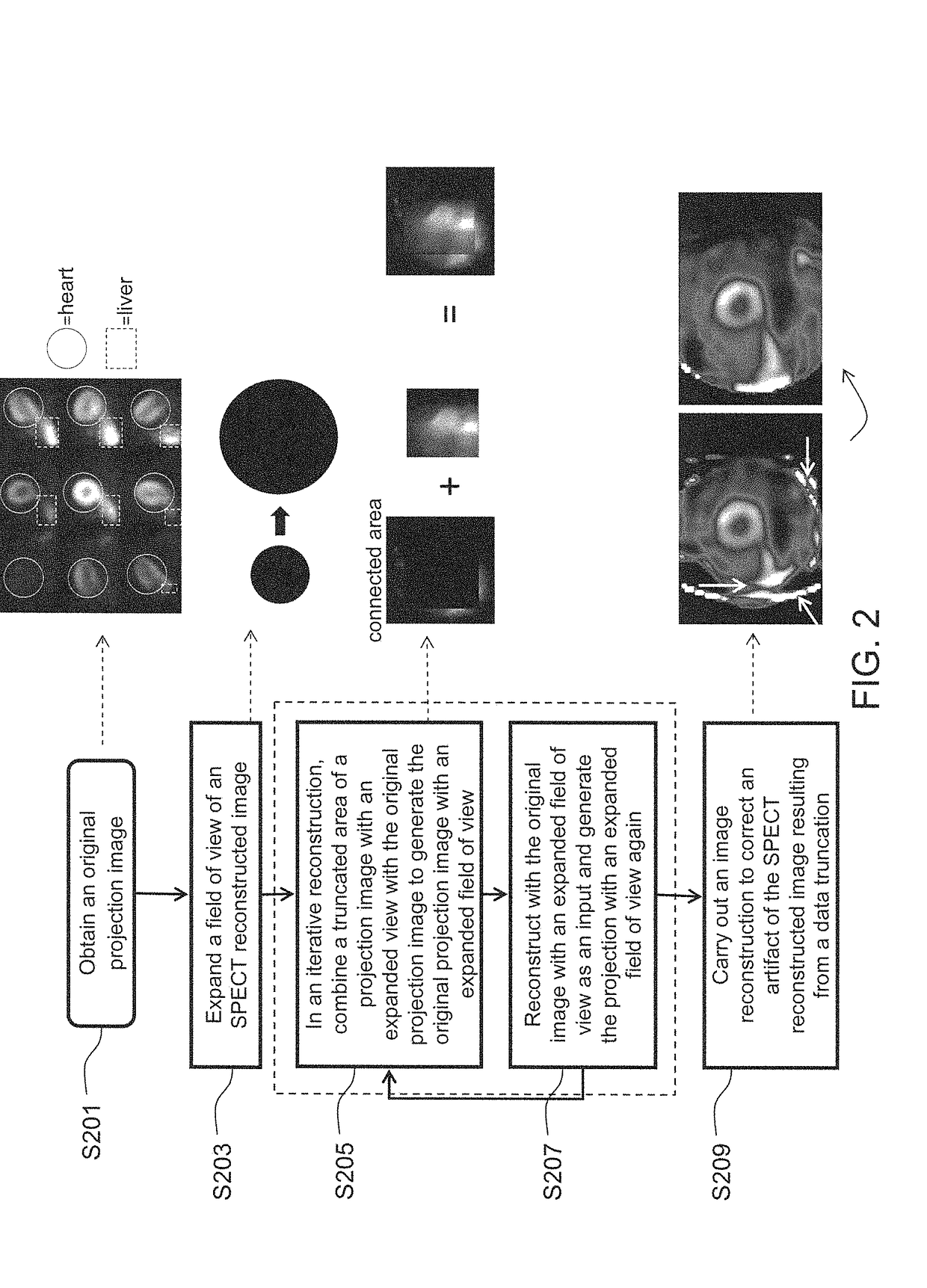Quantitative method for nuclear medicine heart image and electronic device
a quantitative method and heart image technology, applied in image enhancement, tomography, instruments, etc., can solve the problems of more difficult to accurately perform image corrections for dynamic spect data, difficult to further improve the accuracy of cardiovascular disease inspection by nuclear medicine spect, and difficult to further generate a dynamic quantitative image with sufficien
- Summary
- Abstract
- Description
- Claims
- Application Information
AI Technical Summary
Benefits of technology
Problems solved by technology
Method used
Image
Examples
example 1
[0049]FIG. 9 is a schematic diagram illustrating Example 1 of the invention. FIG. 9 shows a 63-year-old female without a risk of a cardiovascular disease. Through the multi-pinhole dynamic SPECT quantitative image reconstruction, the absolute quantization of myocardial blood flow, and the blood flow condition evaluation according to the method in the embodiment of the invention, it is learned that in the left ventricular (LV) area, the left anterior descending (LAD) area, the left circumflex (LCX) area, and the right coronary artery (RCA) area, the rest flows are respectively 1.24 ml / min / g, 1.06 ml / min / g, 0.97 ml / min / g, and 1.76 ml / min / g, the stress flows are respectively 2.21 ml / min / g, 2.20 ml / min / g, 1.96 ml / min / g, and 2.47 ml / min / g, and the myocardial flow reserves are respectively 2.03, 2.37, 2.17, and 1.42. With reference to the blood flow condition diagram, the blood flow condition of the LAD area is represented by the colors of red and orange, the blood flow condition of the L...
example 2
[0050]FIG. 10 is a schematic diagram illustrating Example 2 of the invention. FIG. 9 shows a 58-year-old male with a cardiovascular disease. Through the multi-pinhole dynamic SPECT quantitative image reconstruction, the absolute quantization of myocardial blood flow, and the blood flow condition evaluation according to the method in the embodiment of the invention, it is learned that in the left ventricular (LV) area, the left anterior descending (LAD) area, the left circumflex (LCX) area, and the right coronary artery (RCA) area, the rest flows are respectively 0.90 ml / min / g, 0.78 ml / min / g, 0.80 ml / min / g, and 1.15 ml / min / g, the stress flows are respectively 1.70 ml / min / g, 1.67 ml / min / g, 1.50 ml / min / g, and 1.94 ml / min / g, and the myocardial flow reserves are respectively 2.01, 2.28, 1.97, and 1.69. With reference to the blood flow condition diagram, the blood flow condition of the LAD area is represented by the colors of blue, green, yellow, orange, and red, the blood flow condition ...
PUM
 Login to View More
Login to View More Abstract
Description
Claims
Application Information
 Login to View More
Login to View More - R&D
- Intellectual Property
- Life Sciences
- Materials
- Tech Scout
- Unparalleled Data Quality
- Higher Quality Content
- 60% Fewer Hallucinations
Browse by: Latest US Patents, China's latest patents, Technical Efficacy Thesaurus, Application Domain, Technology Topic, Popular Technical Reports.
© 2025 PatSnap. All rights reserved.Legal|Privacy policy|Modern Slavery Act Transparency Statement|Sitemap|About US| Contact US: help@patsnap.com



